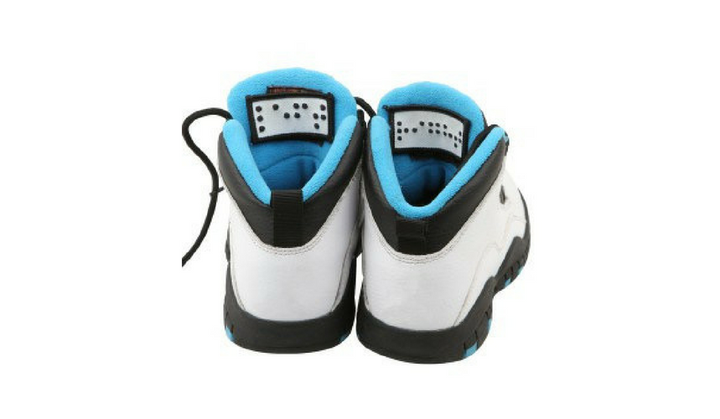
In recent years, well-known brands like Target, Zappos and Lands’ End have begun introducing adaptive clothing lines for children. Aerie recently featured a model who uses a wheelchair and another with an ostomy pouch. These are surely great strides, but behind all that big-name marketing are the people leading a grassroots movement for more inclusion in the fashion world, especially for kids.
Inspired By Their Family
Gracie Benedith-Cane’s 11-year-old son, Wani, is legally blind. As he got older, she looked for a way to give her son the pride many kids feel when they get themselves dressed in the morning. Enter Braille Code Inc., Benedith-Cane’s company that sells Braille patches to help people with vision impairments differentiate between the parts of their clothes. She currently offers socks with patches that designate the back from the front, numbered adhesive patches to help kids match the buttons and buttonholes on their shirts, and patches that go on the inside of the tongue of shoes to label one as the right shoe and the other as left.
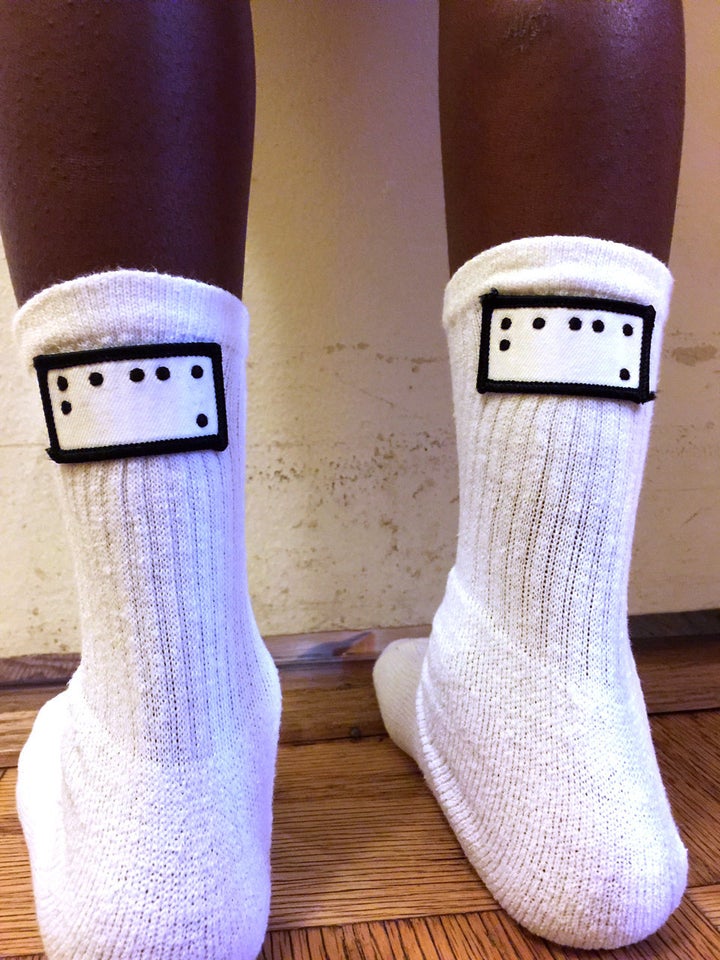
Thanks to these tools, Benedith-Cane’s son has been dressing himself since he was 6 years old.
“My goal is to give children pride,” she told HuffPost. “I want them to be proud of their accomplishment of putting their clothes on [by themselves], while Mom is making breakfast or Dad is getting ready. The child is already dressed and ready to eat and they did it on their own.”
Benedith-Cane, who also wrote a children’s book to raise awareness about Braille, has plans to expand the line of products she sells and hopes her company can highlight the need for Braille and other visual tools in everyday life.
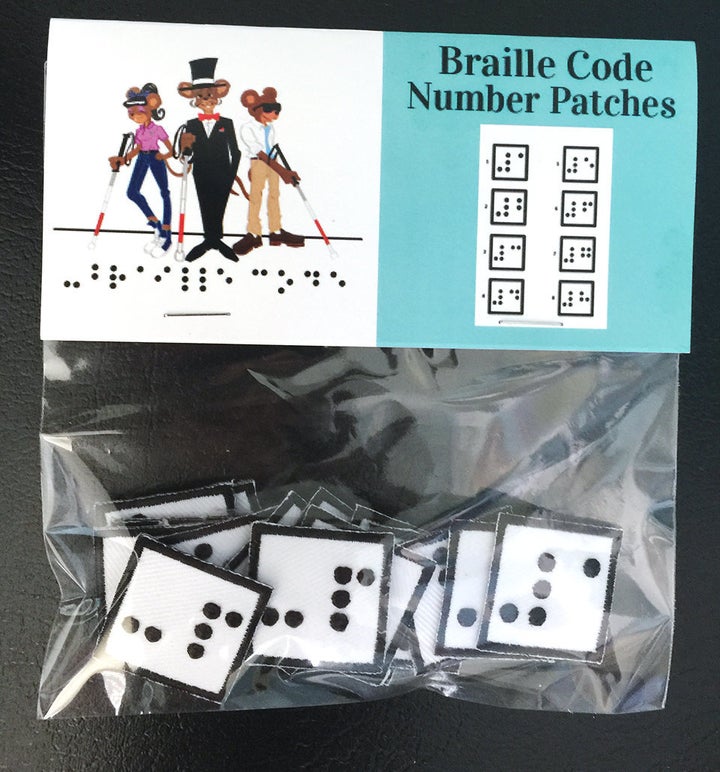
“What bothers me is going into a toy store and having my son say, ‘What is this? What is that?’ and shaking the product and showing it to me,” she said. “I want Braille to be placed on products, on dollar bills. It’s crucial for them. There are people who lack patience for people who have vision impairments.”
For parents of kids with feeding tubes, finding clothes that accommodate their needs can be difficult unless they’re willing to cut up clothing to allow accessibility. Shannon Angersbach, who has been a neonatal intensive care nurse for more than 20 years, saw the need for more inclusive clothing through her work and also within her family. She started Greta Grace Garb after her cousin’s child was born with chromosomal issues and required a feeding tube.
“I didn’t realize that there weren’t options for parents, and so they became obviously very frustrated and they didn’t want to just cut holes in her clothing or lift up her whole shirt in order to get to her feeding tube,” she told HuffPost.
Angersbach said she came from “a long line of sewers,” but was not incredibly into the hobby. She took classes and now adapts clothes for kids and makes customized clothes so they can easily accommodate a gastrostomy tube, often called a G-tube. What stands out about Greta Grace Garb is that it offers products, which are also available via its Etsy store, for infants as well as many items in sizes up to 4T and a few in 5T.
“When I started researching there really was a big need [for bigger sizes],” Angersbach said.
Discovering The Need For Adaptive Clothing
When Talia Goldfarb created Myself Belts, belts that can be fastened and unfastened with one hand, she originally had set out to find an easier way for her potty-training son to go to the bathroom on his own. See how the belt works below.
Goldfarb quickly learned, though, that people with disabilities and various challenges were in need of the product. She told HuffPost she’s heard from parents of kids with autism, Down syndrome, fine motor skill delays and other conditions who are grateful for the belts since they’re effective and look like typical accessories. (The buckles seen on some of the belts are only for show, but give the product a more realistic look.)
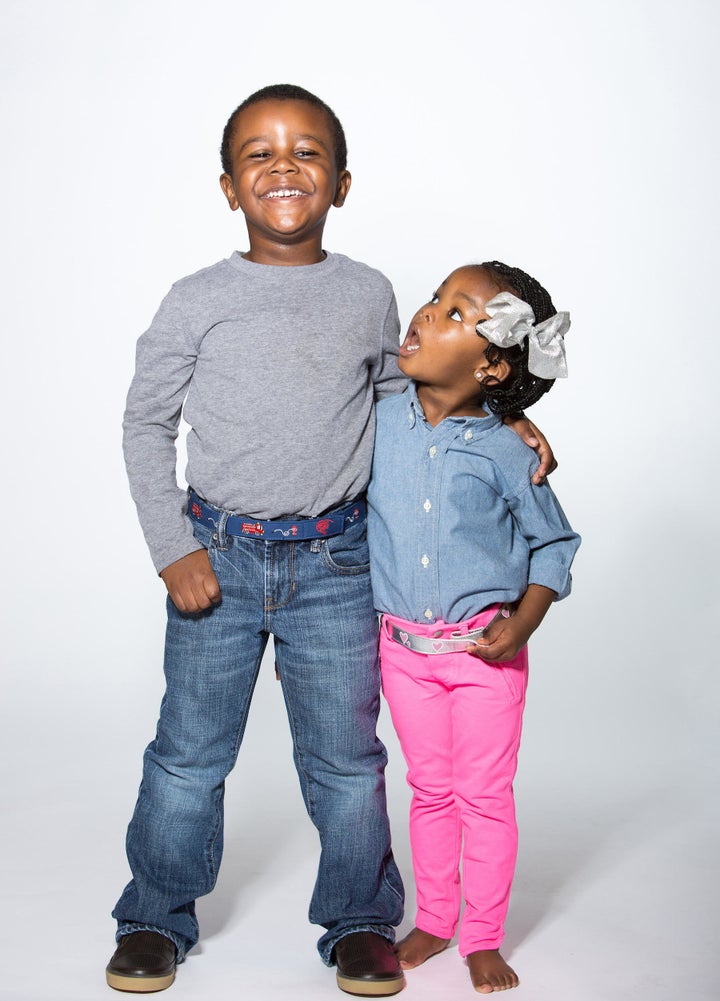
The accessory, which was featured on “Shark Tank,” comes in patterns like flamingos, race cars, leopard print and dinosaurs as well as solid colors. Goldfarb said the company also has plans to expand its collection of belts for teens and adults.
“There’s no reason to have a struggle,” she said. “And it’s nice to have one less thing to worry about during the day.”
Alexis Castellano and Jill Slater, the moms behind Fasten, a company that makes girls’ swimsuits that come undone at the waist, also stumbled on the need for inclusive clothing when they set out to design kids’ swimsuits that could be put on and taken off more easily.
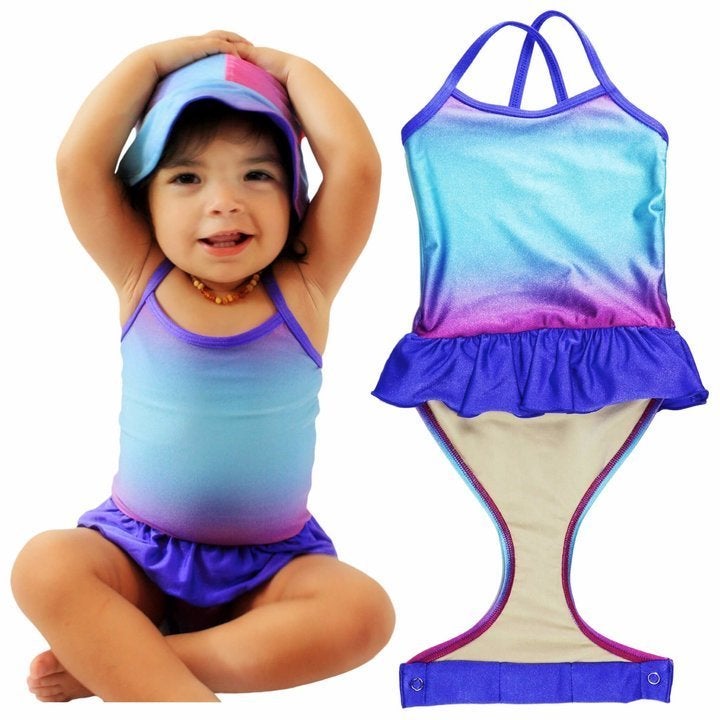
Castellano told HuffPost in July that since the company began, she’s heard from parents whose kids have autism or Down syndrome who are appreciative of their product.
“We’ve heard from a lot of them,” she said. “Many of their kids do water therapy. They’re in the pool a lot, so it makes sense.”
A Marketplace Of Inclusive Designers
Alexandra Connell doesn’t design products, but she’s behind an online marketplace called Patti + Ricky, which is specifically for adaptive and inclusive clothing. The name of the marketplace is a nod to two family members of Connell’s who taught her the importance of blending both fashion and function, especially for people with various medical conditions. A major problem with items marketed to people with disabilities are their lack of personality. Many have a medical or clinical feel and come in minimalist colors like gray or beige.
The marketplace offers products for kids and adults, including bags for wheelchairs, eye patches, emotion patches for people who are nonverbal, sensory beanbags, hearing aid charms and more.
“It doesn’t feel like a medical supply store,” Connell said. “It’s stylish clothing and accessories.”
Connell told HuffPost she’s proud to support the designers of these products, many of whom have disabilities or have kids and other family members with disabilities.
Making Inclusivity A Part Of The Runway Too
Mindy Scheier is a trained fashion designer and founder of the Runway of Dreams Foundation, which emphasizes the importance of having all abilities presented on the runway.

Scheier’s son with muscular dystrophy sparked the idea. He used to often wear sweatpants that allowed him the movement he needed, but when he was 8, he came home from school asking why he couldn’t wear jeans like the rest of his friends.
“Here I was, completely embedded in the fashion industry in my whole career and I didn’t think how impactful what you wear is on your self-esteem,” Scheier said.
Scheier ripped apart a pair of jeans and started “an arts and crafts project that wound up being jeans” that her son was able to wear on his own. She has since founded Runway of Dreams, which raises awareness for adaptive clothing and more inclusion on the runway. In 2016, she also teamed up with Tommy Hilfiger for the brand’s line of adaptive clothes.
“I didn’t want to re-create the wheel, I just wanted to modify it,” Scheier said of her mission in the fashion world.

Chelsea Funk is also pushing for more representation on the runway. Funk was born with amniotic band syndrome and has only a portion of her left arm. She told HuffPost buttons and zippers on clothing were especially difficult for her growing up.
Always a lover of fashion, she graduated from Columbus College of Art and Design, and her senior collection focused on adaptive clothing for actual kids with various needs, including one with a missing limb and one who uses a wheelchair. Her collection was shown at her college’s fashion show, where she hoped to highlight why the fashion industry “just wasn’t working for people who are different.”
Funk has recently started Pit and Pug Adaptive, a clothing company that will offer her own designs and custom orders.
“It’s so important that everybody feels included,” she said, adding later, “Anybody that’s willing to go the extra mile to help anybody is so inspiring.”